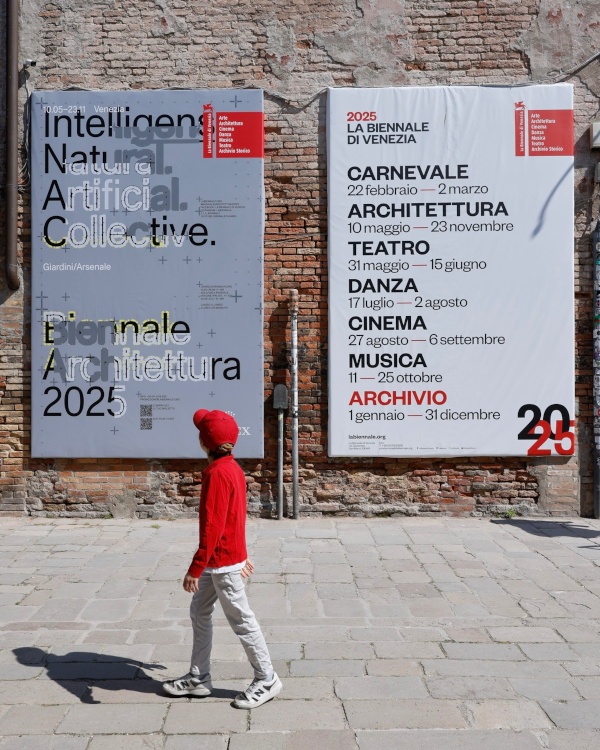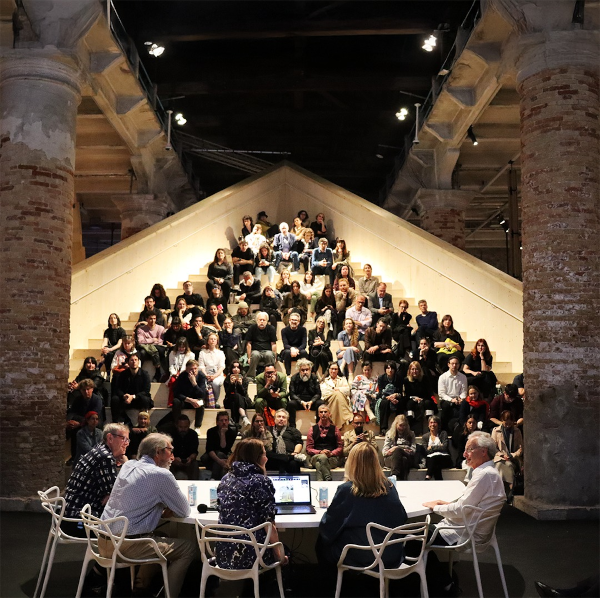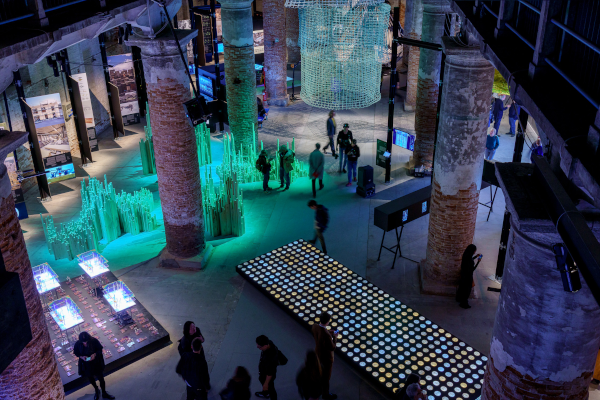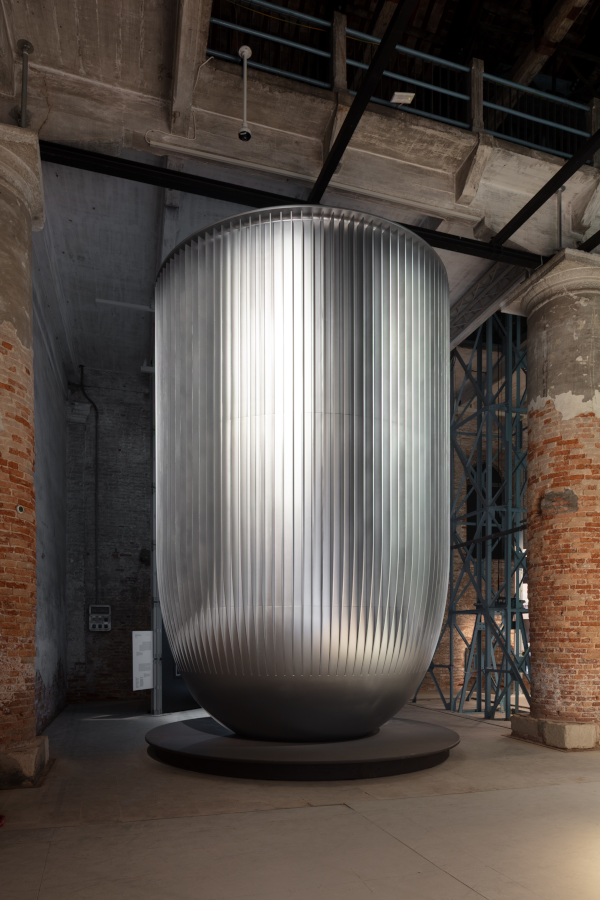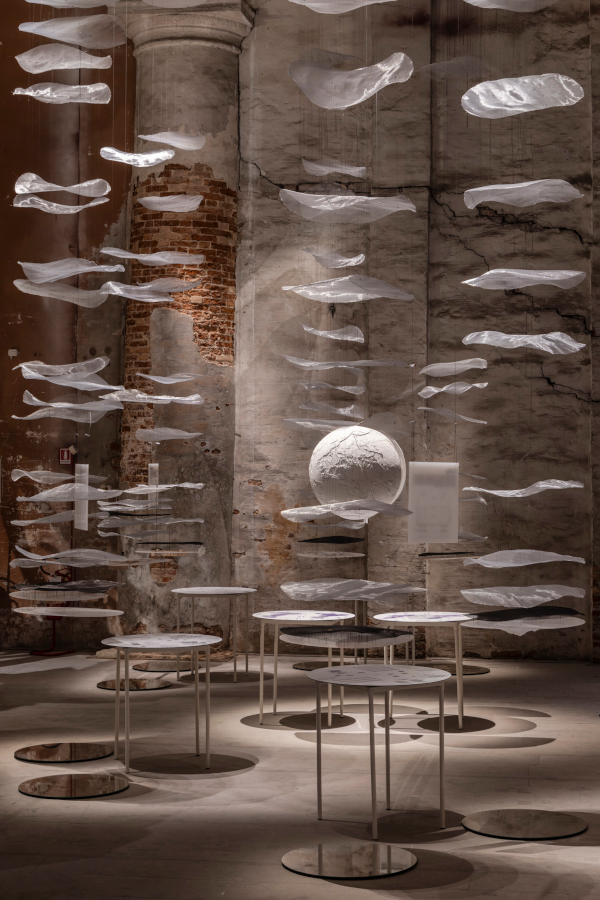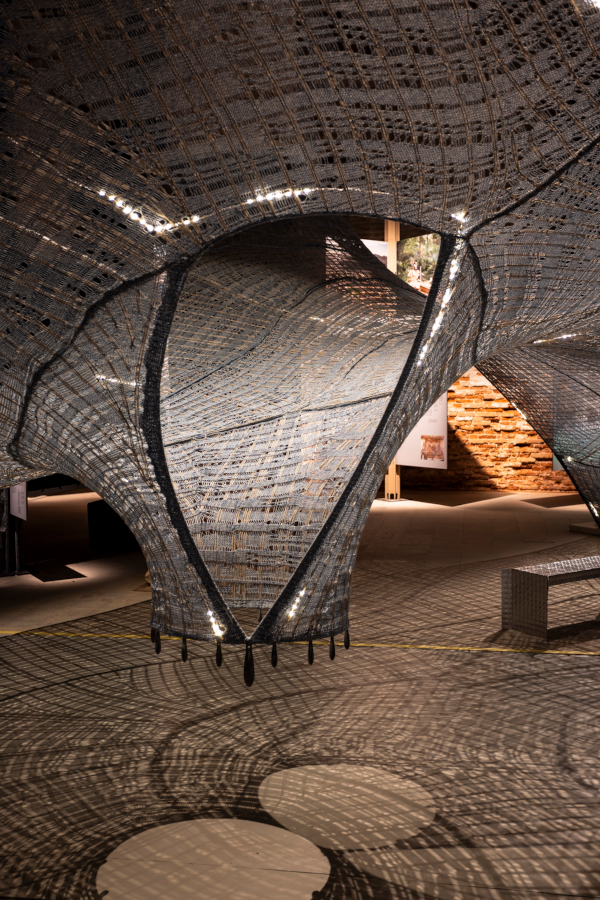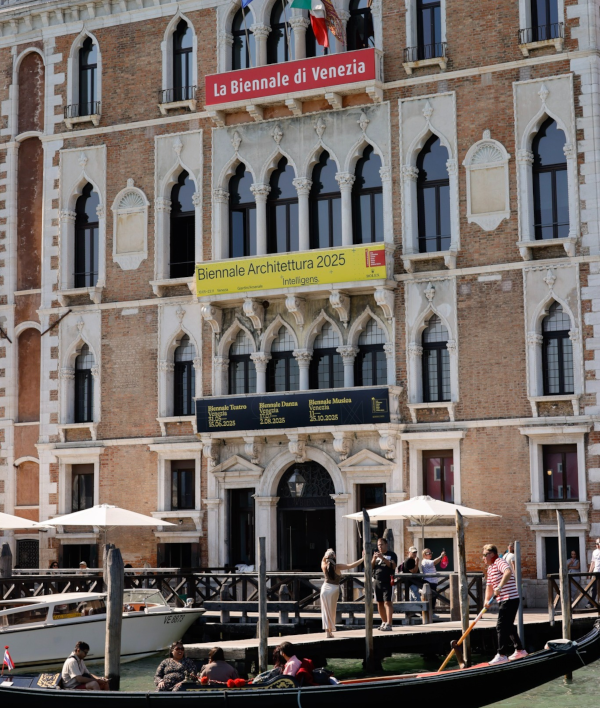
A new design paradigm: adaptation, inclusiveness and collaboration According to Carlo Ratti, the architecture of the future no longer aims at controlling the environment, but at conscious adaptation to climate, social and economic processes that are now irreversible. The exhibition accumulates multidisciplinary contents and methodologies, generating a critical mass of knowledge that cannot be ignored.
The exhibition, designed by Nicklas Bildstein Zaar of the Sub studio, guides the visitor on a non-linear narrative journey, where the complexity of the contents translates into an immersive and personalized experience.
Two central themes emerge strongly:
The end user of the project is no longer just the human being, but every form of living and non-living intelligence: microorganisms, algae, plants, insects, drones, robots and artificial intelligences.
The home as a shelter: in a hostile environment, the home is transformed into a living organism, capable of regenerating the resources it consumes, thanks to protective membranes and biodynamic processes.
Material as a vehicle of intelligence
Among the most innovative reflections, the role of material as an intelligent design element emerges. From land to algae, from microorganisms to water, to technological materials such as concrete, recycled plastics and space fabrics, the exhibition explores the potential of matter in building sustainable habitats.
The Saviola Ecological Panel®, invented in 1997, fits into this context, well before sustainability became a central theme. Made with 100% post-consumer wood, it now represents a concrete solution for responsible architecture, in line with the values of the 2025 Biennale.


